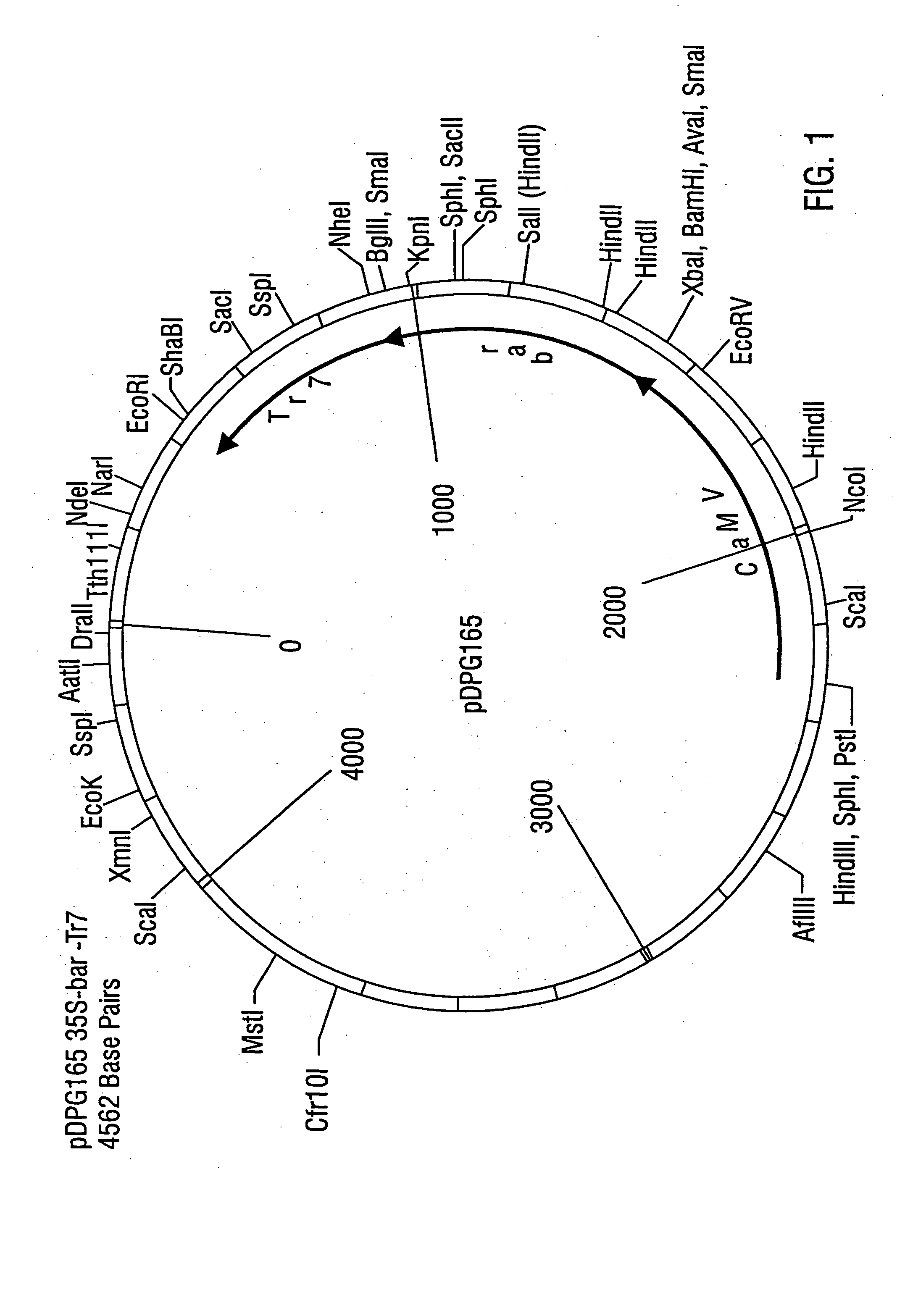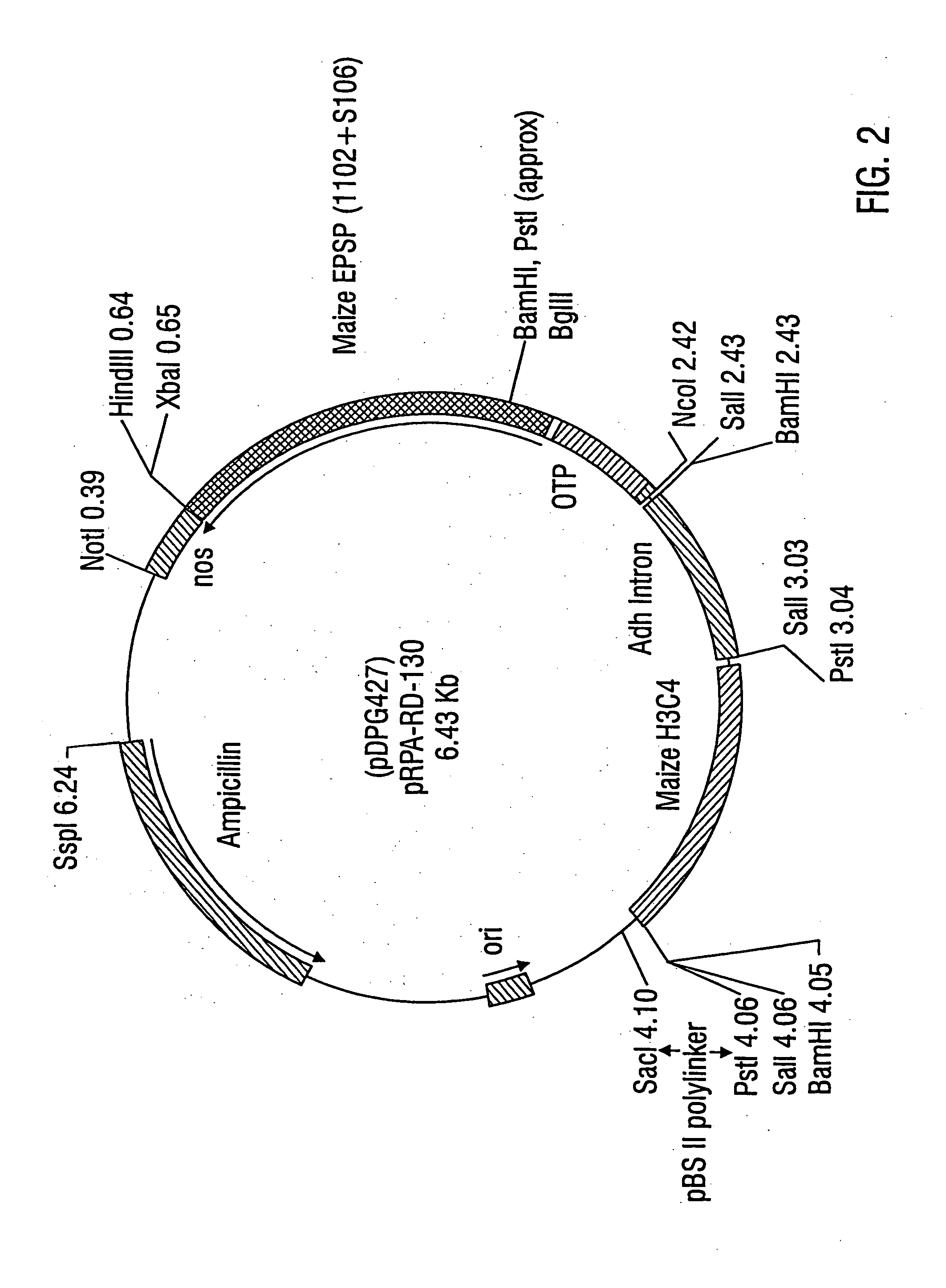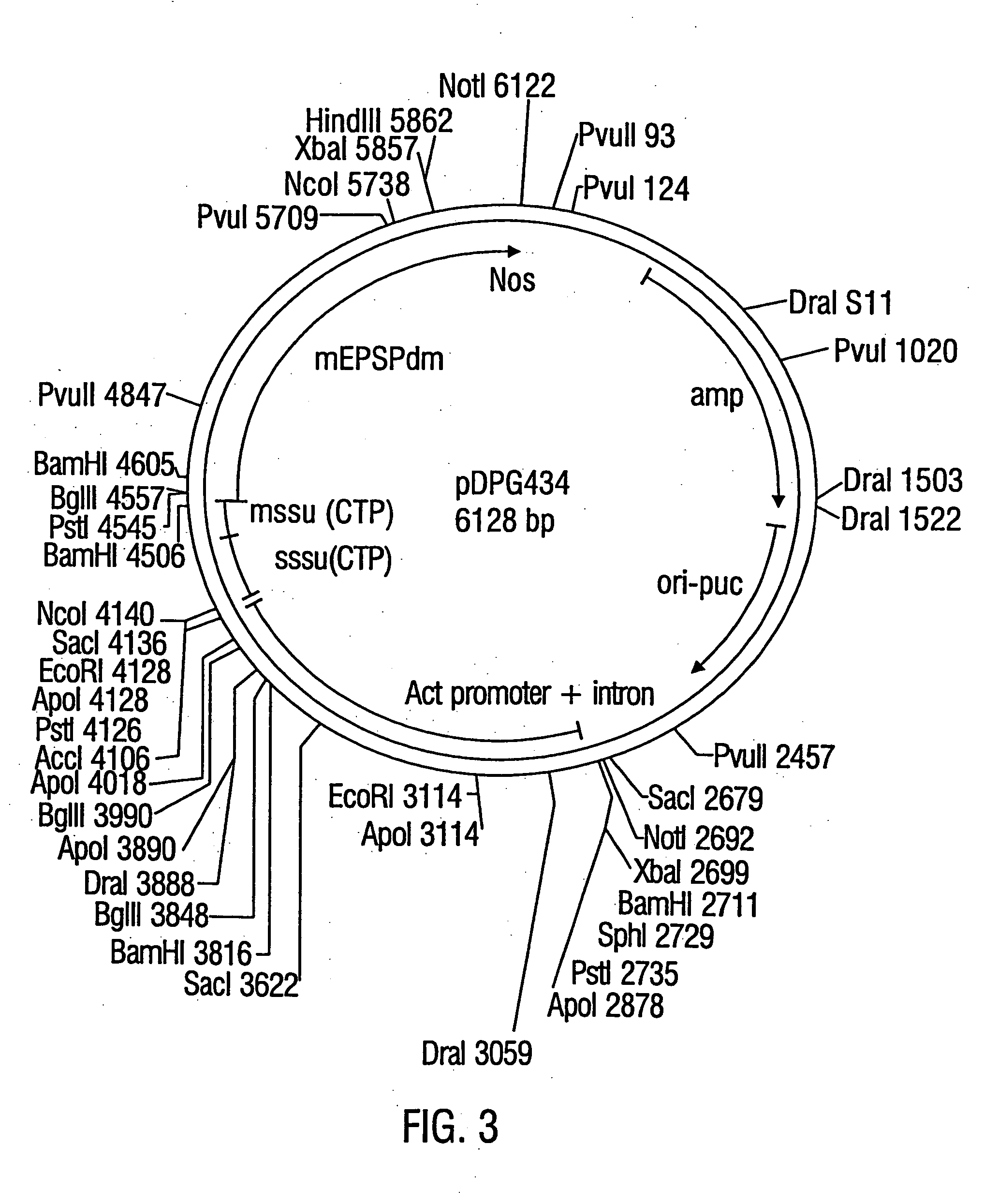Glyphosate resistant maize lines
a technology of glyphosate and maize, applied in the field of transgenic maize plants, can solve the problems of rapid accumulation of ammonia and death of plant cells
- Summary
- Abstract
- Description
- Claims
- Application Information
AI Technical Summary
Benefits of technology
Problems solved by technology
Method used
Image
Examples
example 1
Initiation and Maintenance of Cell Line AT824
[0256] This example describes the initiation and maintenance of cell line AT824, which has been used routinely for transformation experiments. Immature embryos (0.5-1.0 mm) were excised from the B73-derived inbred line AT and cultured on N6 medium with 100 μM silver nitrate, 3.3 mg / L dicamba, 3% sucrose and 12 mM proline (2004). Six months after initiation type I callus was transferred to medium 2008. Two months later type I callus was transferred to a medium with a lower concentration of sucrose (279). A sector of type II callus was identified 17 months later and was transferred to 279 medium. This cell line is uniform in nature, unorganized, rapid growing, and embryogenic. This culture was desirable in the context of this invention as it is easily adaptable to culture in liquid or on solid medium.
[0257] The first suspension cultures of AT824 were initiated 31 months after culture initiation. Suspension cultures may be initiated in a v...
example 2
Generation of Glyphosate Resistant Line GA21 by Microprojectile Bombardment of AT824 Cells
[0259] The mutant maize EPSPS gene was introduced into AT824 suspension culture cells via microprojectile bombardment, essentially as described by U.S. Pat. No. 5,554,798 and U.S. patent application No. 08 / 113,561, filed Aug. 25, 1993, which are both specifically incorporated herein by reference in their entirety. In this example, the mutant maize EPSPS gene was derived from plasmid pDPG434 (FIG. 3). Plasmid pDPG434 contains a maize EPSPS gene with two amino acid changes, Thr to Ile at position 102 and Pro to Ser at position 106. An approximately 3.4 kb NotI restriction fragment containing the mutant maize EPSPS expression cassette of pPDG434 was used for transformation. The mutant maize EPSPS expression cassette contains a rice actin promoter and the nos 3′ end.
[0260] Suspension culture AT824 (described in example 1) was subcultured to fresh medium 409 3 days prior to particle bombardment. C...
example 3
Stable Transformation of AT824 Cells by Electroporation
[0263] Maize suspension culture cells were enzyme treated and electroporated using conditions described in Kryzek et al. (U.S. Pat. No. 5,384,956). AT824 suspension culture cells, three days post subculture, were sieved through 1000 μm stainless steel mesh and washed, 1.5 ml packed cells per 10 ml, in incubation buffer (0.2 M mannitol, 0.1% bovine serum albumin, 80 mM calcium chloride, and 20 mM 2-(N-morpholino)-ethane sulfonic acid, pH 5.6). Cells were then treated for 90 minutes in incubation buffer containing 0.5% pectolyase Y-23 (Seishin Pharmaceutical, Tokyo, Japan) at a density of 1.5 ml packed cells per 5 ml of enzyme solution. During the enzyme treatment, cells were incubated in the dark at approximately 25° C. on a rotary shaker at 60 rpm. Following pectolyase treatment, cells were washed once with 10 ml of incubation buffer followed by three washes with electroporation buffer (10 mM HEPES, 0.4 mM mannitol). Cells were...
PUM
| Property | Measurement | Unit |
|---|---|---|
| time | aaaaa | aaaaa |
| resistance | aaaaa | aaaaa |
| erosion | aaaaa | aaaaa |
Abstract
Description
Claims
Application Information
 Login to View More
Login to View More - R&D
- Intellectual Property
- Life Sciences
- Materials
- Tech Scout
- Unparalleled Data Quality
- Higher Quality Content
- 60% Fewer Hallucinations
Browse by: Latest US Patents, China's latest patents, Technical Efficacy Thesaurus, Application Domain, Technology Topic, Popular Technical Reports.
© 2025 PatSnap. All rights reserved.Legal|Privacy policy|Modern Slavery Act Transparency Statement|Sitemap|About US| Contact US: help@patsnap.com



